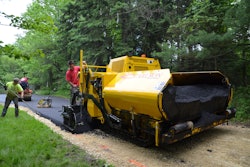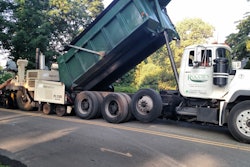Once a new employee is hired and placed on a crew, nothing is more critical than how the foreman or crew leader handles the new worker on their first day. The effort made, and the support provided, can send the new employee home with no intention of coming back -- or can reinforce to the worker that they have made the best decision possible about accepting the new job.
Here are seven actions a foreman or crew leader should take on that new employee’s first day – both to make the employee more comfortable and to give the leader a chance to begin the assessment process.
1. Shake hands & introduce the crew. Shaking hands hints at the new employee’s self-confidence, provides insights (based on grip strength) if the worker has the physical strength to perform some of the on-the-job tasks, and can signal the employee’s level of enthusiasm (which can be reinforced -- or not -- by their eye contact and response to the handshake.
Then introduce the new employee to the rest of the crew, making sure to introduce each member by name. While the new employee is not expected to memorize the names each employee, this effort serves as an “ice breaker,” allowing the crew to feel more comfortable with the new face.
2. Match the new employee with another crew member. For a successful first impression and a quick study of the new employee, match the new worker with one of your existing crew members. Matching new employees with a current worker will reduce some of their anxiousness, allowing them to relax so they can focus more on what they see, hear, and learn.
Matching a crew member with the new employee also provides some field assessment from a trusted worker. Over the course of a few days, the veteran worker will be able to discern the new employee’s work habits and describe the new employee’s attitude, work strengths, work attitudes etc.
3. Assign easier but necessary tasks. If the new employee comes to you as an experienced worker, you might be able to start them out on more complex work. But if you have a new employee with little to no construction experience, especially in your area of specialty, then introduce them to some of the easier, more fundamental tasks. As much as you want that new employee to fill a huge need in the crew, you will only frustrate them if they are pressed too soon to perform difficult tasks; you’ll risk either a “No Show” the next day or your crew’s anger – or both. Make the new employee’s first day as simple or as easy as possible. After all, if they cannot learn, or if they struggle to perform even the simplest of tasks, how difficult will it be to push them to learn more complicated tasks and processes?
4. Check on the new employee at “10 & 2”. That’s 10:00 a.m. and 2:00 p.m.! Most new workers will be glad to have an early morning visit from their Foreman – just ask how they’re doing, if they have any questions, and if they’re ready for another task! Use the afternoon check-in to ask what they have learned on their first day. Answers to such simple questions can tell you loads on how they have embraced and internalized their work day.
5. Take the time to explain the “why". It’s easy to teach a worker the “What” or even the “How” to do something. But explaining “Why we do it this way” begins the process of education and defines how our company is different from others. You will have to repeat the “Why” periodically but sharing it early, here, begins the process of letting the new employee know that there is a real and significant purpose to what they will be doing today, this week -- and maybe for their career.
6. Ask the nworker what they learned on their first day. Ask them not only how they thought their first day went, but what did they actually learn. Make sure to give them a heads-up early in the day so they can have time to prepare their message. The new worker who is enthused and wants to work for your company will respond positively to this question. The worker who sort of “hems and haws” may not be nearly so interested in working for your company.
7. Tell the new worker What they did right & well before leaving for the day. For our new employee, simply telling them how you observed their work effort can ignite a flame of enthusiasm in the employee. Be sure to do this just before they leave for the night. It will be a positive send off, one that they will transfer to those waiting for them at home.
With the number of workers looking to construction as a career choice dropping, contractors must pull out all of the stops to give a new worker every excuse possible to stay with their new contractor. Incorporating these seven steps into your hiring and onboarding process will help your new hire become more comfortable more quickly and will enable you to more easily evaluate whether this new hire could be a long-term employee.
Brad’s newest publication, “A Foreman’s Playbook for Leading the New Employee,” is available through Amazon and his website, www.pinnacledr.com.



![Lee Boy Facility 2025 17 Use[16]](https://img.forconstructionpros.com/mindful/acbm/workspaces/default/uploads/2025/09/leeboy-facility-2025-17-use16.AbONDzEzbV.jpg?auto=format%2Ccompress&fit=crop&h=100&q=70&w=100)








![Lee Boy Facility 2025 17 Use[16]](https://img.forconstructionpros.com/mindful/acbm/workspaces/default/uploads/2025/09/leeboy-facility-2025-17-use16.AbONDzEzbV.jpg?ar=16%3A9&auto=format%2Ccompress&fit=crop&h=135&q=70&w=240)








